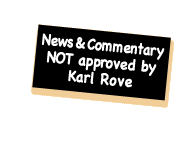WRONGFUL TERMINATIONS OF HOMEOWNERS FROM HAMP BY TOP HAMP SERVICERS, Q4 2014 TO Q3 2015 Servicer Wrongful Terminations of Homeowners from HAMP Bank of America, N.A. X CitiMortgage Inc X JPMorgan Chase Bank, N.A. X Nationstar Mortgage LLC X Ocwen Loan Servicing, LLC X Select Portfolio Servicing, Inc. Wells Fargo Bank, N.A. X X Wrongful terminations of homeowners from HAMP found by Treasury. Source: Treasury’s servicer compliance examination reports covering Q4 2014 through Q3 2015, as provided to SIGTARP
Ugh!
Stopforeclosurefraud:
TARP’s major foreclosure prevention program, the Home Affordable Mortgage
Program (“HAMPâ€), was created to provide sustainable and affordable mortgage
assistance to homeowners at risk of foreclosure.1 Although this program is at a
turning point in its lifecycle, mortgage servicers administering HAMP will continue
to need strict oversight in upcoming years. While HAMP was already scheduled to
stop accepting homeowner applications on December 31, 2016, Congress recently
terminated HAMP as of that date, but protected homeowners’ ability to stay in
HAMP and receive TARP-funded assistance for up to six years.2
To give homeowners in HAMP the best shot at keeping their homes, the
greatest concern going forward should be helping the homeowners who are in
HAMP to stay in HAMP for the full six years. Already, as of December 31, 2015,
507,359 homeowners with permanent HAMP modifications fell out of the program
by missing three payments (referred to as “redefaultingâ€) – which is almost one out
of every three homeowners in HAMP.3,i
The harm to a homeowner falling out of HAMP is significant, as they are
no longer eligible to receive TARP incentive and other benefits.ii According to a
Treasury survey of HAMP servicers:4
• 23% of all homeowners who redefaulted out of HAMP moved into foreclosure,
• 12% of redefaulted homeowners lost their homes through a short sale or deedin-
lieu of foreclosure, and
• 28% of redefaulted homeowners received an alternative modification,
usually a private sector modification that is less advantageous than a HAMP
modification.iii
Given the high percentage of homeowners falling out of HAMP and known
problems with servicers not following HAMP rules, in October 2013, SIGTARP
recommended that Treasury research and analyze whether, and to what extent, the
conduct of HAMP mortgage servicers contributed to homeowners redefaulting on
HAMP permanent mortgage modifications.iv Although Treasury has not conducted
a full analysis, Treasury has partially implemented SIGTARP’s recommendation,
and reviews samples of 100 homeowners who had redefaulted out of HAMP at
each of the largest HAMP servicers each quarter as part of Treasury’s on-site and
remote compliance testing at each of the largest servicers.
SIGTARP’s concerns over servicer misconduct contributing to homeowner
redefaults in HAMP have been borne out. Treasury’s findings in its on-site visits to
the largest seven mortgage servicers in HAMP over the most recent four quarters
show disturbing and what should be unacceptable results, as 6 of 7 of the mortgage
servicers had wrongfully terminated homeowners who were in “good standing†out
of HAMP.v
These staggering findings clearly show that servicer misconduct is contributing
to some homeowners falling out of HAMP. Homeowners were wrongly terminated
from HAMP by their servicer despite making timely mortgage payments, putting
them at risk of losing their home. These homeowners were forced out of HAMP
through no fault of their own. Mortgage servicers did not give these homeowners a
fair shot. As these instances were found through sampling, Treasury does not know
how many other homeowners were also wrongfully forced out of HAMP.
IN THE LAST YEAR, SIX OF THE SEVEN LARGEST
HAMP SERVICERS WRONGFULLY TERMINATED
HOMEOWNERS OUT OF HAMP WHO WERE PAYING
THEIR MORTGAGE
Here is SIGTARP report. Click here.


